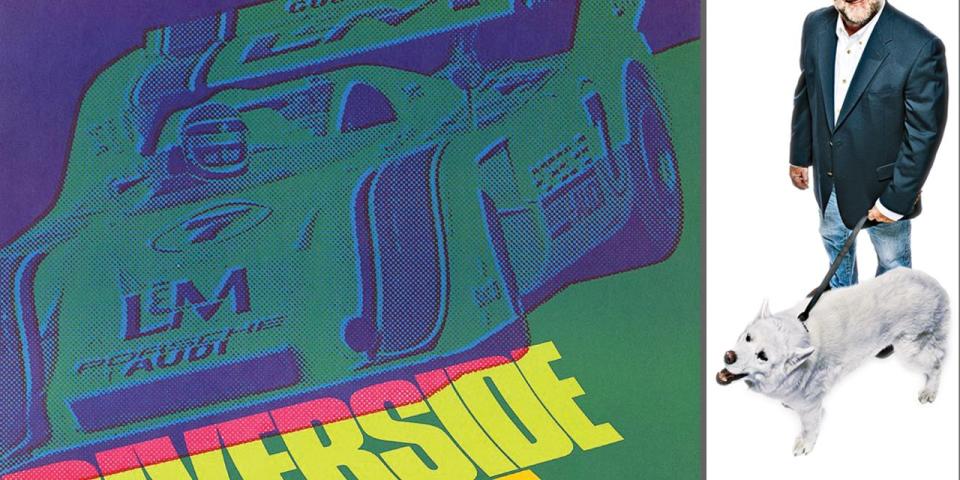John Phillips: For Mark Donohue, 1100 hp was 'Far From Too Much'



On Wednesday morning, August 20, 1975, the phone rang in my dingy beige apartment in Burlington, Ontario. I had just put in 30 consecutive hours of writing, editing, and laying out race reports for CAR Weekly, which we sometimes spelled “Weakly” because there were only five of us and we possessed merely the slimmest notion of what we were doing. On the phone, the editor said, “You gotta come back in. Mark Donohue died last night. We need an obit.”
Warming up for the Austrian Grand Prix, my hero, Donohue, 38, had spun his March at 150 mph and struck his head on a metal bar supporting a sign. He died two days later.
It was hard to believe because Donohue and team owner Roger Penske were then the cleverest guys in racing. Donohue, equipped with a mechanical-engineering degree from Brown University, approached car setup not with pet theories or traditional wisdom but with a slide rule, an overarching grasp of how physics strives to thwart a race car’s mission, and 300 push-ups daily. When Penske Racing took delivery of a Ferrari 512M, for instance, they immediately fabricated a bigger rear wing. Ferrari’s chief engineer Mauro Forghieri glared at it and said, “They’ll never let you run that wing at Le Mans.” Mark replied, “Well, I wouldn’t want to run this wing at Le Mans, would I?”
“Partly because we were both engineers, Mark and I hit it off,” recalls Patrick Bedard. “He had one religion: testing. If he didn’t test a car before a race, he didn’t have his Peanuts security blanket and would fret that his edge was lost.”
But his edge was rarely lost. In his career, Donohue started 311 races and won 119 of them, a winning average of 38 percent. Of 55 Trans-Ams he entered, he won 29.
“I think I was the first guy to assert that Mark was a better driver than an engineer,” says Bedard. When Donohue took the Ferrari to Le Mans, the car attained only 205 mph on the straight versus the Porsche 917’s 235 mph. “The Ferrari lived up to none of Mark’s calculations, and he was devastated,” Bedard recalls. “So they fiddled with it in non-meaningful ways, then Mark went back out.” He gained 11.5 seconds—the quickest Ferrari in the field and fourth overall. “He did it through sheer force of will. Mark told me, ‘Sometimes you just have to get it done.’ ”

“That was my take, too,” says Michael Argetsinger, who has just written a riveting biography called Mark Donohue: Technical Excellence at Speed (David Bull Publishing, $39.95). “It is core to the myth of Mark that he was just an okay driver but a genius engineer. Not true. In everything he drove—even an Elva Courier and a Cobra, cars he didn’t develop—he still won. In fact, Mark often wasn’t the engineer at all. The real engineers were Don Cox [from GM] and Helmut Flegl [from Porsche].” It was largely Flegl who created the Porsche 917-30, whose 1100 horsepower, the SCCA bitched, was killing the Can-Am series. Donohue disagreed. “We’re far from having too much horsepower,” he asserted. “My definition of too much horsepower is when all four wheels are spinning in every gear.”
Burge Hulett, Donohue’s lifelong friend, told Bedard: “Mark was actually a bit of a doofus, awkward everywhere except behind the wheel. There, he was God—that was his way of distinguishing himself.” His divine touch extended to his street cars; a friend once described riding in Donohue’s Porsche 911 as “a Wall of Death thing most of the time.”
The relentless pursuit of perfection eventually took its toll. “First to go was his marriage,” says Argetsinger. “Mark felt he had to devote all his time to the team. He was sleeping at the shop, and he couldn’t say no to Roger—couldn’t decline more development, more cars, more projects.”
Weary and still recuperating from leg injuries sustained in an awful crash at Road Atlanta—which briefly left him allegedly abusing alcohol—Donohue announced his retirement at the end of ’73. “Except I knew it wouldn’t last,” recalls Penske Racing’s timer/scorer Judy Stropus. “Mark returned [a year later] because he realized he wasn’t good at anything else. He tried to get a car dealership; that didn’t work. He tried to be a team manager; that didn’t work. He needed something he could do well.”
Alas, Penske Racing’s first F1 car, the PC1, was so mediocre that Donohue persuaded Penske to replace it with a customer’s March 751, a curious crack in the myth that was Mark. His son, David, told me: “The legend was that my dad and Roger conquered all. Truth is, they often didn’t know if something would work.”
Thirty-three years after the big crash, Penske told Argetsinger: “Mark was my best friend [this, despite Donohue once spearing his boss with an AMC Javelin in the pits, tossing Penske 15 feet]. What I realize now is that I wouldn’t have succeeded in my other businesses if Mark hadn’t completely taken over the race team.”
In the Penske garage at Indy in ’71, someone—certainly not Donohue or Penske—erected a sign that said: “Those of you who think you know it all are particularly annoying to those of us who do.”
You Might Also Like

 Yahoo Autos
Yahoo Autos 